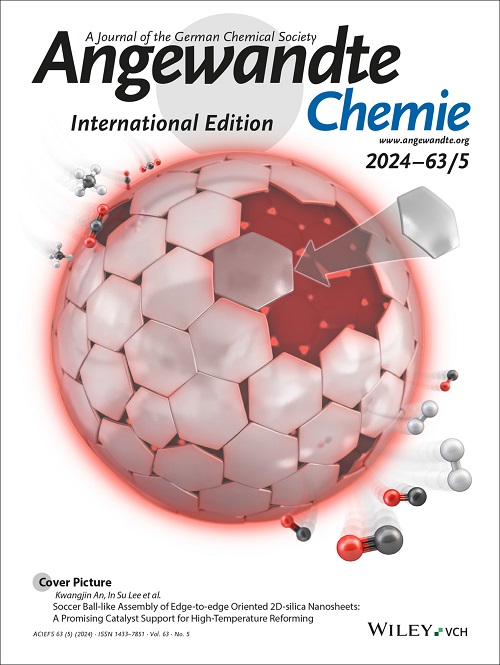Carbon‐Extraction‐Triggered Phase Engineering of Rhodium Nanomaterials for Efficient Electrocatalytic Nitrate Reduction Reaction
IF 16.1
1区 化学
Q1 CHEMISTRY, MULTIDISCIPLINARY
引用次数: 0
Abstract
Phase engineering plays a crucial role in tuning the physicochemical properties of noble metal nanomaterials. However, synthesis of high‐purity unconventional‐phase noble metal nanomaterials remains highly challenging via current wet‐chemical methods. Herein, we develop a unique synthetic methodology to prepare freestanding unconventional hexagonal‐close packed (2H) Rh nanoplates (NPLs) via a rationally designed two‐step strategy. By extracting C from pre‐synthesized rhodium carbide of different sizes and morphology, phase‐controlled synthesis of Rh nanomaterials can be achieved. Impressively, the obtained parallelogram 2H Rh NPLs have high phase purity, well‐defined 2H (0001)h and (10[[EQUATION]]0)h facets, and good thermostability (stable up to 300 °C). In the proof‐of‐concept electrocatalytic nitrate reduction reaction (NO3RR), the 2H Rh NPLs achieve higher ammonia (NH3) Faradaic efficiency (91.9%) and NH3 yield rate (156.97 mg h‐1 mgcat‐1) with lower overpotentials compared to the conventional face‐centered cubic Rh nanocubes with (100)f facets. Density functional theory calculations reveal that the unconventional (0001)h surface has energetically favored NO3RR pathway and stronger H*absorption ability compared to the (100)f surface, which may lead to the higher activity and selectivity of NH3 production on 2H Rh NPLs. This work opens new avenues to the rational synthesis of unconventional‐phase metal nanomaterials and provides important guidelines to design high‐performance electrocatalysts.求助全文
约1分钟内获得全文
求助全文
来源期刊
CiteScore
26.60
自引率
6.60%
发文量
3549
审稿时长
1.5 months
期刊介绍:
Angewandte Chemie, a journal of the German Chemical Society (GDCh), maintains a leading position among scholarly journals in general chemistry with an impressive Impact Factor of 16.6 (2022 Journal Citation Reports, Clarivate, 2023). Published weekly in a reader-friendly format, it features new articles almost every day. Established in 1887, Angewandte Chemie is a prominent chemistry journal, offering a dynamic blend of Review-type articles, Highlights, Communications, and Research Articles on a weekly basis, making it unique in the field.

 求助内容:
求助内容: 应助结果提醒方式:
应助结果提醒方式:


